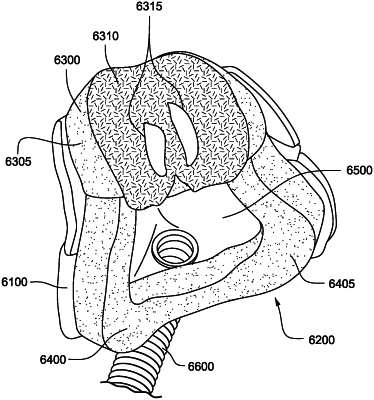| CPC A61M 16/0622 (2014.02) [A61M 16/06 (2013.01); A61M 16/0683 (2013.01); A61B 5/0826 (2013.01); A61M 2202/0225 (2013.01); A61M 2205/02 (2013.01); A61M 2210/0618 (2013.01); A61M 2210/0625 (2013.01)] | 20 Claims |

|
1. A patient interface for sealed delivery of a flow of air at a continuously positive pressure with respect to ambient air pressure to an entrance to a patient's airways including at least entrance of a patient's nares, wherein the patient interface is configured to maintain a therapy pressure in a range of about 4 cmH20 to about 30 cmH20 above ambient air pressure in use, throughout the patient's respiratory cycle, while the patient is sleeping, to ameliorate sleep disordered breathing;
said patient interface comprising:
a seal-forming structure configured and arranged to form a seal against the patient's face,
wherein the seal-forming structure includes a foam material and a textile material, the textile material comprising a seal-forming surface configured and arranged to sealingly engage the patient's face,
wherein the foam material includes a patient facing surface configured and arranged to face the patient in use,
wherein an outer perimeter of the textile material is joined to the patient facing surface of the foam material,
wherein at least a portion of the textile material is unattached to the patient facing surface of the foam material to allow the flow of air at the therapy pressure to enter between the textile material and the patient facing surface of the foam material during therapy, which allows the textile material to inflate and displace relative to the patient facing surface of the foam material during therapy in order to provide a pressure activated seal against the patient's face.
|